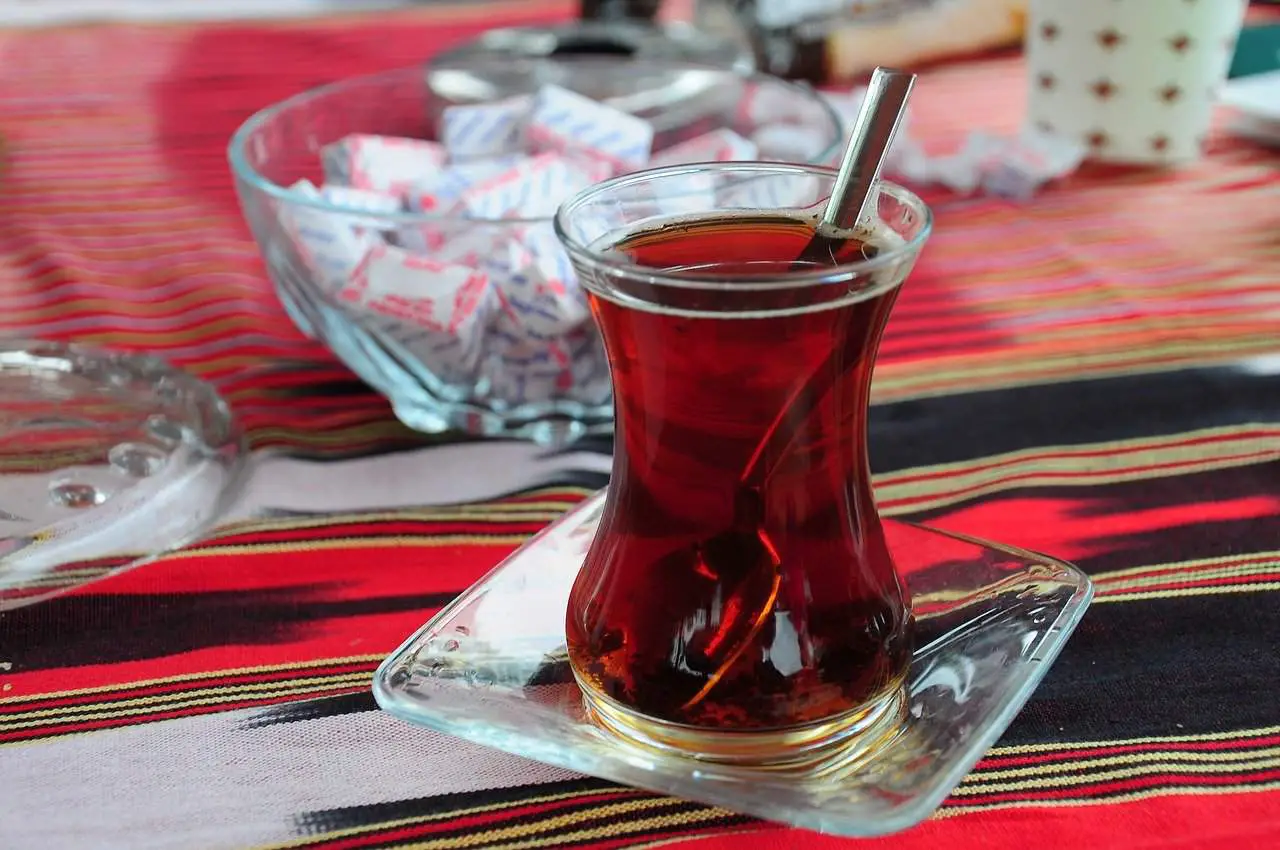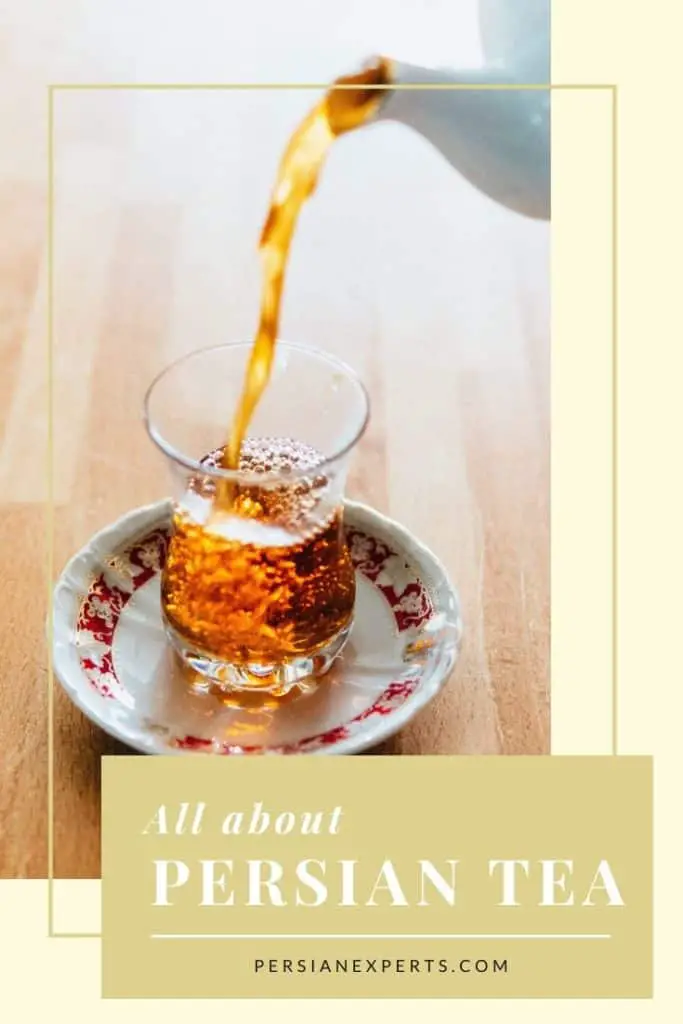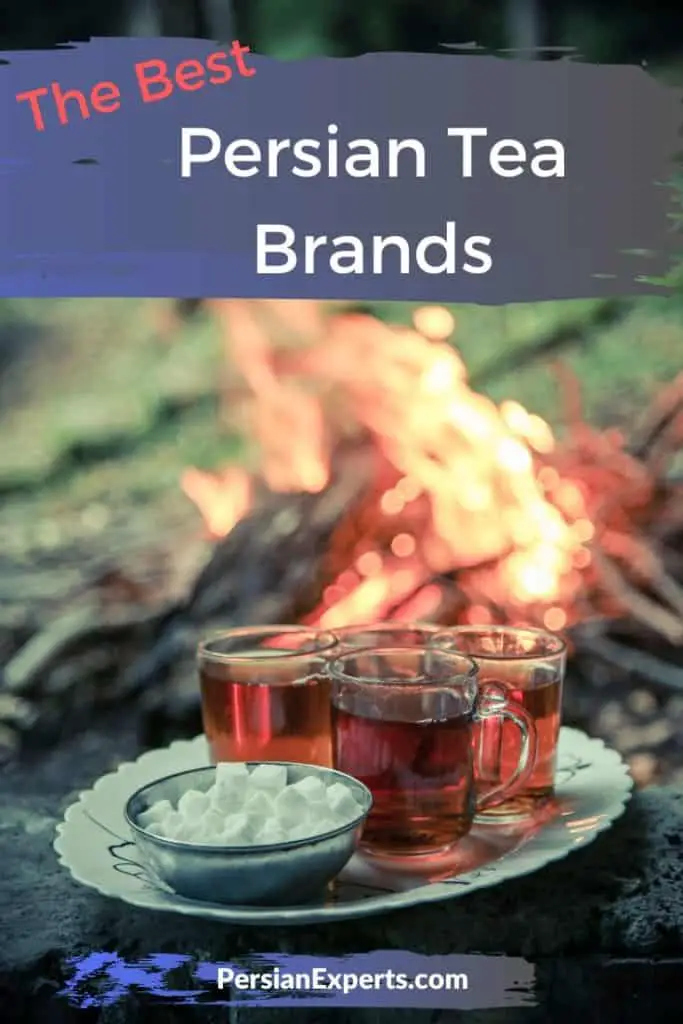Black tea, called chai in Farsi, is one of the most popular drinks in Iran and surrounding countries. In fact, it is so popular that it is more than just a drink – it is part of the Persian culture and everyday life. In this article, you will learn everything about tea in the Persian culture. From the early history to tips on how to make the best Persian tea and the best Persian tea brands.
How did tea become so popular in Persia?
Black tea, one of the most favored drinks in the world, was first discovered in China about 5000 years ago. It was made out of a shrub called Camellia sinensis. The Chinese called it “Cha”. Over the years, the Chinese identified the curative effects of the Cha and also started using the dark liquid for coloring. After a while, the tea was imported to different countries and eventually became an expensive and aristocratic drink.
In Persia, the history of tea in Persia dates back to the 15th century. The trade between India and China along the Silk Road resulted in the substitution of coffee with tea in Iran.
In the late 19th century, Kashef Al Saltaneh, the Iranian ambassador in India, believed that the growing demand of tea and increasing imports became too expensive for Persia. He thought that growing tea could become an economic resource for Iran. Studies revealed that there are similarities between the climates in India and Northern Iran. Initially, farmers refused to grow as it is a long and tedious process. However, eventually, they agreed, and the plantation started in the suburb of Lahijan City.
In 1940, the Iranian tea gardens spread wide, and in 1958, Iran successfully established a tea organization to support tea workers and farmers. These days, the total area of tea farms in Iran is 35,000 hectares.
Persian tea is one of the finest and well-qualified tea types in the world. You will find the Persian tea in every other Iranian house. Moreover, if you enter into a Persian house, the first thing you will be offered is a nice and warm cup of Persian tea. In the colder regions of the country, they prefer to drink multiple cups of tea throughout the day.
Persian tea ingredients
Here are the ingredients that you need to prepare a warm cup of good-quality Persian tea:
- Two tablespoons of loose leaf black tea
- Two cardamom pods
- Water
Persian tea recipe
Making Persian tea is quite simple and easy. Below you will find the step-by-step instructions:
- Use a kettle while making Persian tea. Fill the kettle with water and then bring it to a boil.
- When the water starts to boil, add the tea and possibly other spices or flavorings to the teapot (see more on popular Persian tea varieties below).
- Fill the teapot with boiling water.
- Put the pot on the kettle in a secure position and allow it to brew for around five to ten minutes on low heat.
- Pour a little bit of tea into a tea glass or cup. Afterwards, pour it back into the kettle. This will do three things: For one, you can judge from the color if the tea is ready or needs to infuse a little more. In addition, it will also heat up the glass. Pouring the tea back into the kettle will stir the liquids inside and guarantee an even taste.
- You can top your Persian tea off with crystallized sugar, plain sugar, or any sweets of your choice.
- Enjoy.
Traditionally, most Persian and Middle Eastern households use a Samovar to prepare their tea. A samovar is an appliance that combines both the kettle and tea pot into one. We consulted our staff and compiled a list of the best samovars. Check it out here.
Best Persian tea brands
If you are looking to buy the best quality Persian tea, here is an overview of the best Persian tea brands:
Our Recommendation: Persian Royal – Persian Choice Earl Grey
If you want to bring the authentic flavors of Persia right into your home, the Persian Choice Earl Grey tea variety from Persian Royal is the right choice for you. It consists of high-quality loose leaf Earl Grey tea with a bergamot flavor. This is the tea we drink in our office and we can recommend it to everyone looking to bring an oriental twist to his tea drinking. But we are not the only ones who like this tea- Persian Royal was awarded the first price in the North American Tea Championship for its superior taste and quality.
Sadaf Special Blend Tea with Earl Grey
Even though it might sometimes be a bit hard to get a real Persian tea in the United States due to economic sanctions against Iran, the Sadaf tea varieties are available online and in select tea stores. The tea is packed in convenient tea bags and carries a lot of flavor. This tea brand offers a great value for money for an authentic Persian flavor.
Ahmad Tea Special Blend Loose Tea Caddy
The Ahmad Tea Special Blend is not sourced in Iran but is a popular tea brand among Persians. The tea comes in a sophisticated metal box with loose leafes. This enables you to choose your own intensity.
Sadaf Special Blend Tea with Cardamom Flavor
As stated above, Sadaf is one of the best Persian tea brands and we highly recommend it. Especially the blend with cardamom flavor is a Persian favorite.
Ahmad Decaffeinated Tea
If you react very sensitively to caffeine or want to enjoy a cup of tea in the evening without any impact on your sleep, Ahmad decaffeinated tea is the right tea for you. While the taste stays the same, it is completely free of caffeine and therefore also suitable for pregnant women.
Persian tea varieties
A well-brewed cup of tea is a favorite beverage among Iranian households. Moreover, they also like to add little quirks to the recipe by adding extra ingredients sometimes. As a result, there are several different varieties of Persian tea. Some of them are:
Persian Rose tea
Adding rose petals to your cup of Persian tea gives it an exotic flavor. It is quite easy to prepare, too. All you need are one tea bag or one tsp of black tea leaves for one cup, and one tsp of dried rose petals. You can buy dried rose petals for an affordable price on Amazon.
Start by bringing the water to a boil. Add black tea leaves and dried rose petals to the boiling water. Cover the teapot with lid and let it seep for about five minutes. Serve it hot and fresh.
Moreover, there are multiple health benefits of sipping Persian rose tea too. It helps in improving menstrual health among women. Additionally, Persian rose tea is also linked to digestive relief. Rose petals contain anti-oxidants, which, in turn, help in curing anxiety and depression. If you have diabetes, consuming rose tea will help a great deal in managing your blood sugar level. Iranian medicine uses rose decoction as a potential laxative, and therefore, the Persian rose tea helps in relieving constipation.
Persian saffron tea
Persians like to add saffron to their cup of traditional Persian tea. The steps for the preparation remain the same: Boil water in the kettle. Put two tsp of black tea in the teapot and pour water into it. The next step is to add ¼ spoons of saffron into the teapot and pour the hot from the kettle into it. Put the pot on the kettle and brew it for 10-15 minutes. Once done, pour the tea into glass cups. Moreover, if you want, you can also include sugar cubes, raisins, or other sweeteners in your tea.
If you want to give your Persian tea the exclusive saffron taste, you can buy saffron online:
Saffron is said to have many health benefits. It is nicknamed as the “sunshine spice” because of its mood-boosting properties. Therefore, Persian saffron tea substantially helps in curing depression. Saffron tea also helps in reducing blood pressure and protects against heart diseases. It boosts memory and prevents cancer, too.
Persian Cardamom tea
Iranians find it difficult to leave the tea to be just plain. Therefore, among all the ingredients that they add, cardamom happens to be one of the prime ones. The recipe remains the same. Only make sure to add two broken cardamom pods to the tea before pouring boiling water on it. The Persian cardamom tea is quite popular in Iran.
Persian Earl Grey tea
The Persian Earl Grey tea is an aromatic Ceylon tea that makes it perfect for a morning and afternoon brew. To get the right flavor and aroma, add one tsp to about 200 ml of boiling water and brew for five minutes.
Persian Mint tea
Adding fresh mint leaves to your brewing cup of Persian tea will help you kick-start the morning. It is very refreshing and comes with dozens of health benefits.
Does Persian tea have caffeine?
Persian tea is made from a variety of black tea leaves, and hence, there is a high level of caffeine in just a single serving. Even a sixteen-ounce cup can contain one hundred milligrams of caffeine. Therefore, use caution with the amount of tea you drink. Too much caffeine can cause high blood pressure, nausea, restlessness, and dizziness. Moreover, drinking black tea is not recommended for pregnant and breastfeeding women as the high caffeine content might be potentially harmful to the baby.
Conclusion
Tea is not only a beverage, but it is a significant reflection of the Persian culture. Therefore, it is not just an ordinary drink in Iran, but brings together family and friends and contributes to happy times and joyful talks. If you are planning to have a Persian tea time, make sure to also check out our post about the best Persian sweets.
Pin this post for later by clicking on one of the images below:










Wow! I didn’t know Persian Saffron Tea. Although, I prefer coffee, I would like to taste this tea so much. Does anybody, where I can buy it?
Saffron tea is one of our favorite tea varieties. You can either just sprinkle a little saffron right into the black tea or buy a pre-mixed black tea with saffron. You can find it here on Amazon for example: https://amzn.to/36JMvLo
We hope you will enjoy it! It’s better than coffee 🙂
Another fine petsian tea herball called Avishan very semilar to Oregano taste and smell , not only does tEmperial his herb uses as spice in food but also would make a nice herbal tea before bed time.Empirical evidence has shown that drinking Avishan tea every other night would benefit pulmonary systemm with improving lung function .